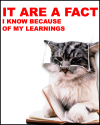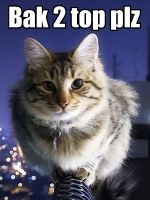- Portals
- The Current Year
- ED in the News
- Admins
- Help ED Rebuild
- Archive
- ED Bookmarklet
- Donate Bitcoin
Contact an admin on Discord or EDF if you want an account. Also fuck bots.
Internet linguistics
This "article" is a poorly-written but real thesis paper based on regurgitated memes that have been repeated so much they are unfunny. The author is simultaneously lazy and missing the point. Memes aren't made to be analyzed and picked apart, they are supposed to be fun.
It is very TL:DR and uses citations constantly in the place of actual thought. Such laziness is to be expected by a millenial who also has Girl on the Internet Syndrome. To spare your sanity all citations have been converted into hover-overs marked by being undlerlined. Attempts have been made to link relevant articles but we seriously doubt you'll finish this page so we're not sure why we even bothered.
You have been warned.
Introduction

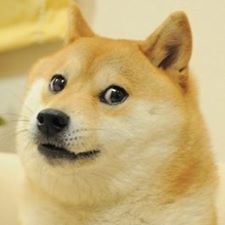
In this thesis I will describe two English-based Internet languages, LOLspeak and dogespeak, and analyze and compare them according to their distinctive features. The aim is to show how these Internet languages vary from each other and explain why they cannot be used interchangeably.
LOLspeak is the Internet language derived from captions of certain cat images found on different online forums. The cat images were originally a humorous hobby of Internet users but they developed into a website called I Can Has Cheezburger, where users could send various cat pictures and communicate with the language depicted in the images. The language plays with spelling conventions and morphology of English. Dogespeak also has its origins in text found in humorous pictures, but of a certain breed of dog. These pictures are usually referred to as doge memes and the language in them consists of short phrases and it plays mostly with grammar.
Internet languages are typically viewed as something completely random, even though they are not just a mix of words and expressions. Both of these languages have their own grammar rules and they can be clearly violated, so in a way LOLspeak and dogespeak behave like natural languages. Some linguists have re-searched LOLspeak and its characteristics, but there have not been any academic attempts to describe and compare both LOLspeak and dogespeak. Because these Internet languages showcase a lot of interesting features, they should definitely be analyzed properly, and that is what I intend to do in this thesis.
I base my analysis on the data collected from two different sources. For LOLspeak, I work with materials from the LOLcat Bible Project which is a wiki-based collaboration for translating the Bible in LOLspeak. Following Gawne &Vaughan (2011), I use the LOLcat Bible as my source since its content is not as limited as the original image macros. Therefore it represents the core elements of LOLspeak and is suitable for my comparative analysis. For dogespeak, I use the Doge Corpus from The League of Nerds website which was published in 2014.The corpus is a collection of dogespeak captions found in the first hundred images when searched for doge on Imgur on February 23, 2014.}}
The theoretical background of this thesis is largely based on the concept of language play and the field of Internet linguistics. The Internet is changing our language use in many different ways and Internet linguistics helps us to understand how and why these changes are happening. The effect that the Internet has on our daily language use is clearly visible, and therefore linguists have already studied different phenomena, such as languages found in emails, chat rooms and instant messages. However, there have not been any substantial studies made about languages developed by Internet users, so I will present my analysis on possibly the two most recognizable Internet languages currently used. Since the field and its phenomena are relatively new, any kind of {{Hover|linguistic description would be of interest|David Crystal, personal communication, August 1, 2015]]. As a child of the 1990s, I have grown up with the technology revolution and seen some amazing things happen online, and I felt privileged to be a part of it all. Even the tiniest details of the Internet’s fascinating features have shown me and millions of others how people can play with languages, and even invent new ones.
In the beginning of this thesis I will introduce the theoretical background (section 2) for my analysis. I will explain what Internet linguistics is all about,and also concentrate on describing Internet languages and the concept of language play. After the theoretical part I will introduce both LOLspeak (section4) and dogespeak (section 5) by establishing their origins and then portraying their grammatical features with examples from the appendices. Based on these findings I will conduct a comparative analysis of these languages (section 6) and end this thesis with an analytical discussion (section 7) and a conclusion (section 8). The appendices at the end of this thesis include the data for LOLspeak (Appendix A) and dogespeak (Appendix B).
Theoretical background
Since the Internet and its online communities is a rather new phenomenon, the subject has been approached by linguists only recently. Being able to find suitable theoretical material for this thesis turned out to be quite problematic. Essentially,there are only two books written about the languages on the Internet and about the actual field of study focusing on investigating these languages: Language and the Internet (2006) and Internet linguistics: a student guide (2011). Both of these books are written by the British linguist David Crystal and they served as the main sources for the theoretical background of my thesis.
In addition, I wanted to link the Internet languages in question to the concept of language play. Language play is the manipulation of languages, almost in any imaginable manner. It can result in humorous rhymes and sounds, modified words and meanings and even distinctive play languages, for example Pig Latin. BothLOLspeak and dogespeak play with the rules of English so their manipulation can be defined as “the manipulation of the linguistic system for play”. In the following sections I will introduce the theoretical materials used in this thesis more thoroughly.
Internet linguistics
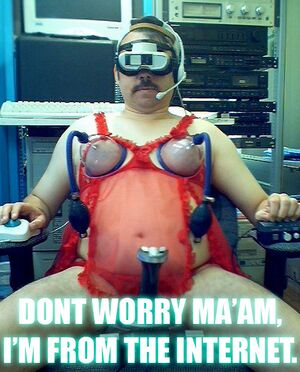
Internet linguistics is the study of the languages used on the Internet. It is one of the newest fields of study within linguistics and research in it involves finding out what is happening on the Internet linguistically and how the Internet is affecting our language use. The effects might include features we do not even consider coming from the Internet, for example the use of certain acronyms. One the of goals of Internet linguistics is to describe how language is used in new and interesting ways on the Internet. For example, it helps us understand how languages work on this new communication platform, and also how grammar and vocabulary can be manipulated to suit this new domain.
A key figure in this field is the well-known British linguist David Crystal. He understands the enormous potential which the Internet has as a massive resource for linguists and is keen to explore its possibilities. Nevertheless, as a field Internet linguistics is quite recent so there has not been a lot of research about languages used on the Internet. The problems in the published studies lie in the ever-changing characteristics of the Internet: The information presented may already be outdated at the time of the publication. Crystal predicts that future studies about the Internet will relate to several linguistic subfields, ranging from syntax to psycholinguistics.
During the late 20th century and the early 21st century, the Internet became a“global medium” and an essential part of our daily lives. Crystal notes that the Internet provides new ways to express ourselves with different languages, and that has led to interesting unique phenomena. After this so called Internet revolution, linguists have realized its excessive possibilities: The research opportunities might be endless because of the continuous nature of the Internet,meaning that the Internet could be defined as a renewable information database.
Internet language
—Crystal, 2006: 271 | ||

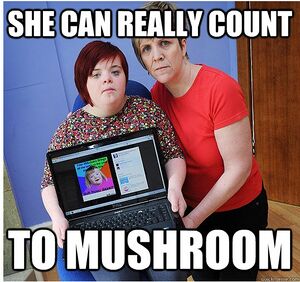
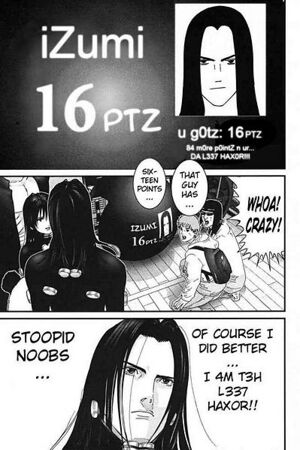
Whether you call it Internet slang, Internet language or Internet speak, this new phenomenon is a significant part of the Internet and its new developments. In this thesis I decided to use the term Internet language, since the word “language” refers to a system of communicating thoughts and feelings and that is exactly what many Internet users want to do with these varieties. With these concepts I’m referring to the language of Internet users who want to express their feelings, thoughts and experiences in more suitable ways than before and for this purpose, they have created entirely new vocabulary and terminology. They are under a lot of pressure as they have to adapt their language and keep up-to-date due to the demanding new situation son the Internet (Crystal 2006: 257). However, it is clear that Internet language,with its new words and phrases, is able to spread quickly and effortlessly mainly through informal Internet forums and image boards, such as 4chan, Reddit and Tumblr.
Crystal(2006: 20) defines Internet language as “a type of language displaying features that are unique to the Internet”. Yet it is difficult to describe this type of language within certain ready-made parameters because of its diverse and varying nature. So since it is the sum of many different qualities and expressions, it is not possible to describe just one characteristic of Internet language. In comparison,there are a few distinct features between languages found in emails, chat groups, instant messages and also in social media. These types of languages have been studied intensely (for example by Baron 2008 and Thurlow & Mroczek 2011) but the languages created by different subcultures of the Internet has not produced lot of research.
Internet language is a form of language play and conscious breaking of gram-mar rules. Notably, it is more than just acronyms (for example LOL, “laughing out loud”) because it is a formation of language patterns which users can adopt repeatedly for their own purposes.The key features include intentional spelling mistakes in whatever form. One of the most well-known typing mistakes is the deliberate misspelling of the English definite article “the”, written as teh which has its origins in different message boards and in the world of online gaming. Also essential to this form of language is phonetic translation which means representing aword or a part of a word with a single letter or number, like this:
- b4 (before)
- 2 (to/too)
- gr8 (great).
A famous sublanguage is called Leetspeak , or betterknown as 1337speak , and it is based entirely on phonetic translations. Nowadays one of the most recognized features of Internet language is the over-flowing use of “Internet idioms” which are so called colloquial catch phrases. The understanding of these idioms is quite difficult because of their ungrammaticality and their specific reference to the Internet. For example, to be able to under-stand the idiom I can’t even, you must know how it is used and be able to ignore its ungrammatical nature.
Despite the fact that these catch phrases are being coined somewhat irregularly, the most captivating ones continue their lives on the Internet..The Internet languages described in this section are all based on English, as are the two languages analysed in this thesis. Obviously there are a lot of different languages used on the Internet, and the aforementioned features do not depict every Internet language out there. LOLspeak, dogespeak and other humorous language variations are mainly used in certain specific speech communities around the Internet.Leet is derived from the English word “elite” and it is used as an adjective to describe the superior skills of other players. These speech communities exist in several informal Internet forums where users can play with these languages in every imaginable way.
When talking about Internet language and about the different types of catchphrases it has produced, the concept of Internet memes is an important feature. The term meme was originally coined by the British evolutionary biologist Richard Dawkins. He wrote in his 1976 book The Selfish Gene about the gene-centred view of evolution. He explained that various aspects of human culture replicate like genes, and that these units are being transmitted throughout our culture. Dawkins wanted to find a suitable term for this unit of culture, and he chose the word meme, which is an abbreviation from the Greek word “mimeme”, meaning an ‘imitated thing’. In his view memes can be anything from ideas and catch phrases to other products of culture. Currently, the concept of meme is used when referring specifically to a certain viral phenomenon. At first Internet memes were mostly image macros, which are captioned pictures with a humorous message or a catch phrase. Recent developments have broadened the concept of Internet memes and so now in addition to images, it can also refer to GIFs,certain catch phrases, single words and even some songs.
Language play
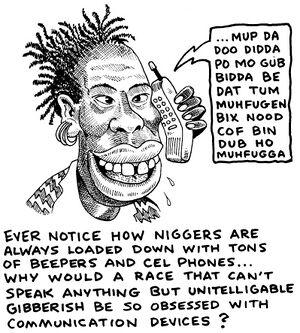
Generally language play refers to “the manipulation of elements and components of language”. Sherzer also points out how language play can occur at every level of language, so therefore these manipulations can be almost anything imaginable from spelling alterations to semantic changes. With these manipulations we are making languages behave in totally new, almost obscure ways, and like Crystal mentions, language play is also “a source of enjoyment”. As this thesis will later specify, both LOLspeak and dogespeak areplayful variations of the English language. This amusing language manipulation is exactly how Internet languages can be interpreted as types of language play. These two Internet languages in question play especially with the rules of English in order to acquire their humorous characteristics.
People have been playing with languages for a long time, but the Internet has served as a great platform for developing new ways of manipulation. Cook describes the function of language as “distinguishing between those who are in and those who are out”. That is exactly what Internet languages areal about. Several users adopted the language depicted in the captions of images,and started experimenting with it. By this language play users found means to express themselves in a way others could not. So in a way, manipulating the linguistic system of English was not only for the amusement of Internet users,but it had a greater function: To bring them together.
Description of the data
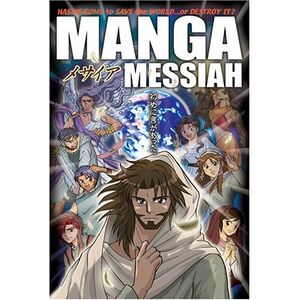
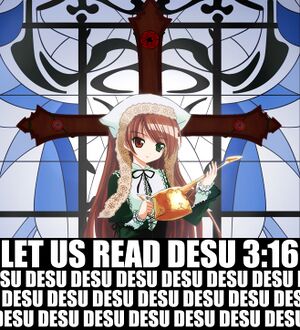
As there is almost an endless resource of suitable material for my thesis on the Internet, I had to make sure I would choose the most appropriate ones. The material should have to be easily accessed and most of all, it should have to represent the language phenomena in question in an understandable way and include all kinds of variations.
For the representation of LOLspeak, I am using the LOLcat Bible Project which is a wiki-based collaboration of several users. The project started in 2007and its main goal was to translate the entire Bible into LOLspeak. After several years it succeeded in translating most of the Bible, both the Old and the New Testament. One of the main reasons why I settled upon this Bible as my main source of material is the fact that since it is a collaborative effort from many different users, it is the most acceptable representation of LOLspeak. The online wiki page has even got common guidelines in order to keep the style of the LOLcat Bible consistent. Like Gawne & Vaughan state, “the LOLcat Biblerepresents the most agreed-upon example of what LOLspeak is”.
Since using the entire Bible as my source material would be too excessive, I decided to narrow my data including only Chapter 1 from the book of Genesis. It can be considered as one of the most well-known parts of the Bible and therefore the structure and the style could be easily compared to the LOLspeak version. As for dogespeak, I was able to find an online Doge Corpus from a website called The League of Nerds and was granted permission to use it in my thesis. The corpus was compiled by Leah Nodar, who is the “Language Nerd” on the site, and it consists of the most popular search results for “doge” on the image sharing platform Imgur. The collected data is from the first 100 doge macros which is a sufficient amount in order to give a proper linguistic description of the different features of this particular Internet phenomenon.
Agreeing with Nodar, I did not see any reason to include all the “wow” interjections from the images in the corpus. In addition I have also deleted the “other” category from the corpus which included all the other words found in the doge images, mostly consisting of random words connected to the original theme of the picture. I find that the words from this category are not relevant in my analysis of dogespeak since I am mainly interested in the peculiarities of its grammar.
With appropriate examples from this extensive material I will be able to identify and represent all the essential grammatical elements of these two languages. The materials will also help me pinpoint different facts and support the comparative analysis. Both Chapter 1 of the book of Genesis from the LOLcat Bible and the Doge Corpus can be found as appendices in this thesis.
The language of LOLspeak
As a language, LOLspeak is quite unique. It can be categorized as ungrammatical but like Gawne & Vaughan (2011) specify, that does not mean the users do not know how to use English. The ungrammaticality is a result of playing with the rules of English, and these manipulations appear at every linguistic level. The following sections will give a proper description of LOLspeak’s history, and also represent its grammatical features.
The origins of LOLspeak and LOLcats
It is generally thought that LOLspeak is nothing but an inadequate version of English: There is no regularity in it and it is just full of grammatical errors. If LOLspeak is considered to be totally random, how is it then possible for different users, who are making the pictures and commenting on them, to decide what incorrect or incorrect use of LOLspeak? Like the users of any other language, the users of LOLspeak follow its consistent grammatical constructions which were formed during the rise of the LOLcats. Therefore it is possible to get LOLspeak wrong if you are not following its conventions.
The grammar of LOLspeak
In the following sections I will describe the various grammatical features of LOL-speak by using examples from Chapter 1 of the book of Genesis from the LOLcatBible (see Appendix A). Because the amount of diverse features is quite extensive, I will only concentrate on the most salient features which are suitable within the constraints of this thesis.
Spelling conventions

As mentioned in section 2 above, one essential feature of this type of Internetlanguage is intentional spelling mistakes. It is a recognizable characteristic alsoin LOLspeak which plays with misspellings. These mistakes are mainly familiarfrom the world of online gaming. Perhaps the most well-known is the deliberatemisspelling of the English definite article “the”, and it is also widely used inLOLspeak:
(1) Genesis 01:04 An Ceiling Cat sawed teh lite, to seez stuffs, An splitted teh lite from dark but taht wuz ok cuz kittehs can see in teh dark An not tripz over nethin.
With its tongue-in-cheek spirit, LOLspeak has also broadened the use of “teh”into other words containing that particular sequence of letters, such as “tehy” for ‘they’, and “otehr” for ‘other’. The use of phonetic translation (described in section 2) is also quite frequent in LOLspeak, LOLspeak derived from the language used in the captions of humorous image macros portraying cats. But where and when did the images actually come from, and how did those images create a language of its own? There is a lot of different opinions about the origins of these comical cat images because of the ever-changing nature of the Internet.
One way or another, someone posted a picture of a cat with the caption “I Can Has Cheezburger?” on 4chan. Users found it entertaining and started to make their own images with cats and captions, eventually developing into a phenomenon called “Caturday”, which meant posting funny image macros of cats on 4chan on Saturdays. Because the pictures made people laugh, they were named LOLcats. Figure 1 below represents the famous picture which is considered to be the very first LOL-cat picture.

From there onwards, the cat images started to live a life of their own and the Internet became filled with them. Eventually, in 2007, an entire website dedicated to creating and sharing LOLcats was created, adequately named after the aforementioned image, www.icanhascheezburger.com . On that site the language of the image macros was shaped into its present form, and it was even adopted by users when they were commentingon different pictures. The language came to be known as LOLspeak, and around the time the ICHC site was created, the LOLcat Bible Project was also initiated.
It is generally thought that LOLspeak is nothing but an inadequate version of English: There is no regularity in it and it is just full of grammatical errors. If LOLspeak is considered to be totally random, how is it then possible for different users, who are making the pictures and commenting on them, to decide what incorrect or incorrect use of LOLspeak? Like the users of any other language, the users of LOLspeak follow its consistent grammatical constructions which were formed during the rise of the LOLcats. Therefore it is possible to get LOLspeak wrong if you are not following its conventions.
The grammar of LOLspeak
In the following sections I will describe the various grammatical features of LOL-speak by using examples from Chapter 1 of the book of Genesis from the LOLcatBible (see Appendix A). Because the amount of diverse features is quite extensive, I will only concentrate on the most salient features which are suitable within the constraints of this thesis.
Spelling conventions
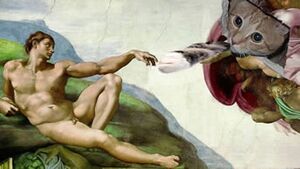
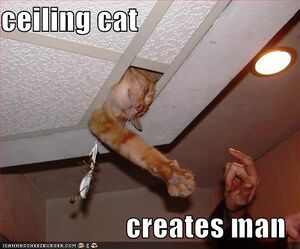
As mentioned in section 2 above, one essential feature of this type of Internet language is intentional spelling mistakes. It is a recognizable characteristic also in LOLspeak which plays with misspellings. These mistakes are mainly familiar from the world of online gaming. Perhaps the most well-known is the deliberate misspelling of the English definite article “the”, and it is also widely used in LOLspeak:
Genesis 01:04 An Ceiling Cat sawed teh lite, to seez stuffs, An splitted teh lite from dark but taht wuz ok cuz kittehs can see in teh dark An not tripz over nethin.
With its tongue-in-cheek spirit, LOLspeak has also broadened the use of “teh” into other words containing that particular sequence of letters, such as “tehy” for ‘they’, and “otehr” for ‘other’. The use of phonetic translation (described in section 2) is also quite frequent in LOLspeak. such as “funny bibel naim ceiling”, meaning ‘for’, and “im in ur waterz making a ceiling, meaning ‘your’.
Other elements, likewise derived from online gaming languages, are the verb-like word “pwn” and the replacement of the letter “o” with the numeral “0”.“Pwn” evolved from the verb “own”, which is widely used in the Internet sub-language Leetspeak to mean the domination or humiliation of others. In LOLspeak both of these elements can either appear separately or combined, like in “An let min p0wnz0r becuz tehy hascan openers”. Although these two elements cannot be described as typographical errors, they are broadly used in LOLspeak (Gawne & Vaughan2011).
A specific spelling convention which can be considered to be used fairly regularly, is the use of “z” as a suffix when denoting plurals or 3rd person singular markers (see below). Here the orthography is adapted to depict the phonetic representation:
- Genesis 01:01: teh skiez
- Genesis 01:02: teh waterz
- Genesis 01:12: letz there be weedz
Morphology
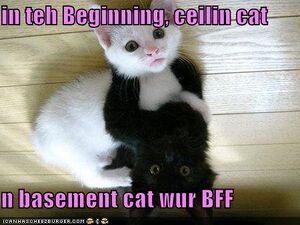
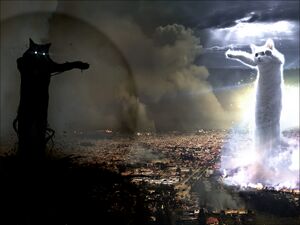
The best way to describe LOLspeak morphologically is to examine its verbal constructions. With straightforward examples, I will be showing how tense marking and person agreement are formulated in this language. The differences in tense marking are clearly visible in the over-use of the weak verbs’ past tense suffix”-ed”. Usually this involves adding the regular suffix into strong verbs:
In addition to this kind of tense marking, there can also be sentences with doublemarking of the past tense, like in the example 3c above (did not eated tehm), and also an extreme version of tense marking, such as “So Ceiling Cat createded the peeps taht waz like him”. The only constructions which do not get the past tense suffix are copulas.
The other typical morphological feature of LOLspeak is the irregular occurence of person agreement in the present tense between nouns and verbs. Essentially in LOLspeak, this means that the 3rd person verbsuffix “-s” is used extensively with other persons. In Chapter 1 of the book of Genesis in the LOLcat Bible, the irregular person agreement appears mostly with1st person singular and 3rd person plural forms:
- a. Genesis 01:03: An Ceiling Cat sayz, i can haz lite?
- Genesis 01:18: An tehy rulez day An night.
- Genesis 01:26: An Ceiling Cat sayed, letz us do peeps like uz, becuz we ish teh qte, An let min p0wnz0r becuz tehy has can openers.
- Genesis 01:29: An Ceiling Cat sayed, Beholdt, the Urfs, I has it, An I has not eated it.
Whereas the regular past tense does not expand to copulas, the irregular person agreement does:
- Genesis 01:05: It were FURST!!!1
- Genesis 01:15: It happen, lights everwear, like christmass, srsly.
Syntax

Together with spelling conventions and morphology, some of the syntactic qualities of LOLspeak showcase the playful spirit of this language, even though there are not that many specific syntactic variations in LOLspeak. Nevertheless, the syntax of questions and negation in sentences are interesting features to analyse.What separates LOLspeak question clauses from English is the absence of subject-auxiliary inversion in the sentence structure:
- Genesis 01:03: An Ceilin Cat sayz, i can haz lite?
This type of construction, whether in questions or not, has become one of the most recognized forms of LOLspeak clauses, also due to the name of the website “I can has cheezburger”. It occurs repeatedly throughout the material, always in the pattern I can has X , as in “i can has teh firmmint” or “i canhas lightz in the skiez”.
Other popular phrasal patterns include Do (not) want X and I am in your X, Ying your Zs, which has its origins in Leetspeak. Both of these phrases can be found in the LOLcat Bible:
- Genesis 01:09: An Ceiling Cat hadz dry placez cuz kittehs DO NOT WANT get wet.
- Genesis 01:11 An Ceiling Cat sayed, DO WANT grass!
- Genesis 01:06: im in ur waterz making a ceiling.
The language of dogespeak

LOLspeak is a language which plays with spelling conventions and morphology, but dogespeak is something quite different. The entire core of its playfulness comes from the manipulation of grammar. The following sections will portray the circumstances behind dogespeak’s birth and also showcase how it actually plays with grammar.
The origins of dogespeak and doge
If the origins of LOLcats were quite unclear due to several different versions found online, the same cannot be said about doge and the language of dogespeak. Much like LOLspeak, dogespeak is the language derived from short captions in certain types of images. These image macros of a Shiba Inu dog went viral after a rather bizarre chain of events. A Japanese kindergarten teacher called Sato adopted a dog in 2008 and soon afterwards started to write a pet blog, in which she posted cute pictures of her various pets. One of these pictures would be the future face of doge memes.
As a word, doge was coined well before it came to refer this certain Shiba Inu. On Reddit, doge related to silly dog images in general. However, in 2013, asavvy Internet user found the picture of Sato’s dog and posted it on Reddit with humorous short captions. This was the beginning of the most recognizable doge phenomenon, and it soon started to portray the entire meme. This incident is a great example of the irrational and entertaining nature of the Internet.. Figure 2 below represents a typical doge meme with colourful captions and doge phrases.

From Reddit onwards, doge spread like wildfire. It became hugely popular on the Internet, and like LOLcats, the doge macros started to live a life of their own. Countless images were generated and dogespeak became the kind of Internet language everyone could use, very much like LOLspeak.
The grammar of dogespeak

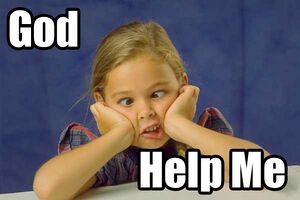
A typical doge meme includes the picture of a Shiba Inu dog with several short captions and the interjection “wow”. Basically, these memes can be about any-thing imaginable and they certainly have their own peculiar characteristics. So inthe following sections I will describe some features of dogespeak by using the material in the Doge Corpus (see Appendix B). Unlike the data for LOLspeak, the analysed material for dogespeak is not a coherent piece of prose, but consisting of short phrases.
Spelling conventions
Like LOLspeak and other Internet languages, also dogespeak plays with intentional spelling mistakes. The misspellings are usually deletions of letters, changes to vowel sounds or the use of phonetic translation:
- such talentz
- such flowers 4 u
- such fashun
- so powirful
- very truble
What makes doge interesting, is the fact that it does not rely the amusing effects on the spelling mistakes. They can be considered as an added bonus, since using them might make the meme even funnier. This means that the typical language found in doge images creates its humorous effects with other methods.
Syntax
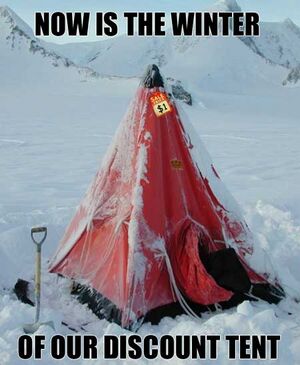
Syntax is the most important part of grammar when describing doge because its syntactic elements make dogespeak what it is. There are certain ungrammatical phrasal patterns which show how dogespeak plays with syntax. These phrases are usually either two-word or three-word phrases, beginning with such, much, so very or many.
Then what makes these phrases so special and distinctively doge? The secret lies in the grammatical modifications of selectional restriction in these phrases. Selectional restriction refers to the “compatibility or combinability of words”. Essentially, different words allow only words with certain semantic features to co-occur with them. For example, the verb “drink”requires an animate subject and a liquid object }(Brinton & Brinton 2010: 175). The ungrammatical nature of dogespeak comes from the severe alternations to word restrictions. All five doge modifiers are used with specific word types but in doge memes, those rules do not apply. First of all, none of them are considered typically to be modifiers for verbs in English. Therefore they are used to modify verbs in dogespeak:
- a. very intimidate
- b. many hurt
- c. so celebrate
- d. much watch
- e. such jump
This is an example of the somewhat confusing but interesting grammar of doge-speak. The modifiers much and many both refer to a large amount, “much” portraying masses without a definite shape and “many” indicating countable items. However, in dogespeak these two modifiers reverse their meanings:
- a. much monitor
- b. much cake
- c. many hurt
- d. many luvs
Both so and very are usually combined with adjectives, but in doge they can modify almost anything else within the theme of the meme:
- a. very dig
- b. very sadness
- c. so talking
- d. so emotion
The final doge modifier is a more complex case. Generally such is used to-gether with noun phrases where it modifies the entire phrase, like in “such a delicious wine” . In dogespeak it has obtained a more diverse means of usage since it can refer to both nouns and adjectives in any kind of situation:
- such flirting
- such winter
- such hard
- such big
Comparative analysis

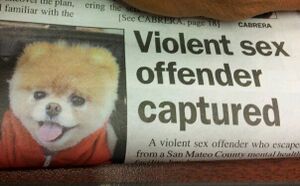
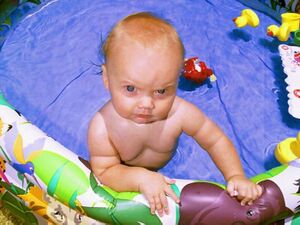
The previous sections described what both of these Internet languages are like. The focus of this thesis is also on comparing the two languages: what makes themsimilar or substantially different. If both LOLspeak and dogespeak were just a random mix of words and phrases which originated in the minds of Internet users,they could be used interchangeably. LOLcat phrases could be put to doge images and vice versa. However, this is not the case. Because both of these languages can be used incorrectly, that indicates that there is grammar in both of them. In addition to analysing these languages, I can showcase their distinctive features by comparing LOLspeak and dogespeak.
Like mentioned above, the essence of these Internet languages is their playful way of manipulating the English language. Internet users want to be able toexpress their ideas in completely new ways, and that has led to these modern additions to Internet culture. So both LOLspeak and dogespeak base their bizarre characteristics on manipulating English, but they do it with different techniques.
LOLspeak plays primarily with spelling, and not just with grammar. Struc-turally, it is a lot like English with complete sentences and correct word order:You rarely see a LOLspeak sentence without a subject or a predicate. Like demonstrated in section 4, LOLspeak tends to be quite complex due to its manipulation of morphemes and words. Compared to LOLspeak, dogespeak does not play just with spelling. It mixes up the grammar, playing especially with selectional restriction. Dogespeak is constructed mostly with two-word or three-word phrases combined with the interjection “wow”. If someone used a complete sentence in a doge meme, it would be considered incorrect because it violates the specific dogerules. These structural differences are clearly visible in the appendices:
- Genesis 01:04: An Ceiling Cat sawed teh lite, to seez stuffs, An splitted teh lite from dark but taht wuz ok cuz kittehs can see in teh dark An not tripz over nethin.
- such cold. so ice. very truble.
In 13b I made three two-word doge phrases from the corpus material which could be used together in a doge image involving a specific theme, for example winter.
Despite the structural differences, both LOLspeak and dogespeak can be analysed as having distinct phrasal patterns. LOLspeak has at least three specific pat-terns (I can has X; Do want X; I am in your X, Ying your Zs) which occur quite often, not just in the LOLcat Bible, but also in LOLcat images and all around ICHC-forums. Obviously these kind of phrasal patterns are shorter in dogespeak. The templates begin with one of the doge modifiers (very, such, so, much and many) and they only take one or two words as their arguments. Whereas LOLspeak patterns are not obligatory elements when writing in LOLspeak, the corresponding dogespeak patterns are the entire gist of dogelike communication.
Because both of these languages are the result of experienced Internet users putting their wittiness to work, it is inevitable that they both have common features with other, older Internet languages. Parts of the lexicons and even some spelling conventions derive from an Internet sublanguage called Leetspeak,and also from the world of online gaming. While LOLspeak tends to embrace these features and uses them quite often, dogespeak does not. The Leetspeak elements can be found in some doge memes, but it does not base its humour solely on them. The different spelling variations can be seen as comical extra effects in dogespeak, but as important parts of how LOLspeak is constructed.
Even though these phenomena are two totally different languages and they have their own concepts, it is interesting that they both evolved in a similar manner. They originated as image macros containing amusing text captions. At first,they were written only in certain types of images, but eventually both LOLspeak and dogespeak started to appear in totally new situations. Essentially, LOLspeak developed into a proper language which could be used to write anything imaginable, for example the LOLcat Bible, and dogespeak is clearly recognized as dogespeak even without pictures of a specific breed of dog, as Figure 3 below points out.
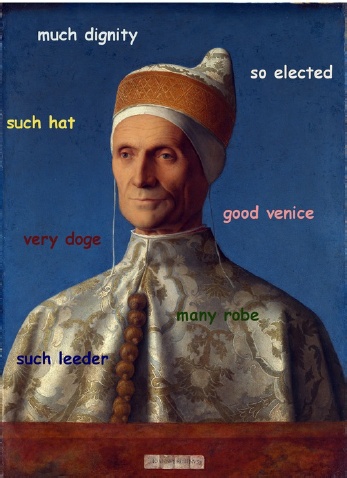
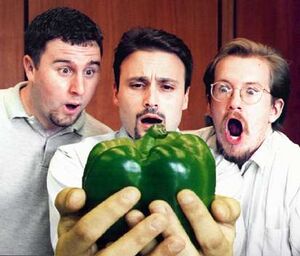
Figure 3 is a great example of the way users have expanded dogespeak’s original phrasal structures to correspond to new humorous image macros.
Even though some might categorize these languages as ridiculous Internet jokes which can mix up constructions, that is not the case. Both LOLspeak and dogespeak have evolved in the same way but because of their peculiar grammars, these two languages cannot be used interchangeably. In addition to this, there can also beincorrect use of the language itself. For example, if written wrong, dogespeak might not be ungrammatical enough.
The following is an example of a post on Facebook :
- A: Doge is a rescue dog. Much respect. So noble. Wow.
- B: Your dogeing is too coherent. “Much noble, so respect”.
This small example supports the view that these types of Internet languages actually have grammatical rules and it also shows how users are not afraid to correct one another.
